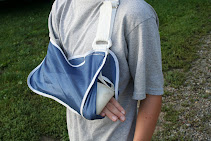A rash of reports, not just in the United States but in other countries such as UK has literally placed the hot gadget iPhone under fire.
Incidents of iPhones and iPod Touches exploding has triggered several safety agencies investigating the matter such as the European Commission. There have been several reports of consumers getting injured when using the iPhone, one user got eye injuries when shards from the burst unit struck his eye and there is another report when an overheated iPhone in Netherlands caught fire and burned the backseat of a car.
Technology experts however, have pinpointed that the culprit behind the hot and explosive phones -- iPhone's built-in lithium-ion battery. Although the rechargeable batteries are not inherently dangerous, it can overheat, spark, and burst into flame thus leading to all sorts of mayhem like injuries, wasted money, etc.
American safety officials however, are not likely to issue a product recall. The federal authorities say that there is no need for massive recall based on the small number of reported incidents. There are only 15 documented cases in the U.S. against hundreds of millions of iPods sold and only around five cases of iPhones/iPod Touches have exploded out of about 40 million.
So if the feds aren’t really making any move to order a product recall, then Apple is just as unlikely to issue a recall of its own products as well. Given their popularity with the consumers, all Apple did was basically say that while they are aware of the reports of exploding iPhones, they are also waiting for the users to bring their defective products. But otherwise, everything is good in terms of their products.
In a fair world, consumers are supposed to get value for the money. An iPhone or an iPod touch is hardly a necessity but people still continue to buy these expensive items because they really want the product, it is actually a status symbol for the hip and trendy generation.
Naturally, when buyers part with their cash, they expect to enjoy their purchase. But a product blowing up in the user’s face is hardly fun and not to mention, potentially dangerous especially if the fire spreads.
It then becomes the responsibility of a manufacturer or vendor of goods to compensate for injury caused by defective merchandise that it has provided for sale. Consumers who are harmed by an unsafe or defective product have a cause of action against said persons who designed, manufactured, sold, or furnished that product.
Incidents of iPhones and iPod Touches exploding has triggered several safety agencies investigating the matter such as the European Commission. There have been several reports of consumers getting injured when using the iPhone, one user got eye injuries when shards from the burst unit struck his eye and there is another report when an overheated iPhone in Netherlands caught fire and burned the backseat of a car.
Technology experts however, have pinpointed that the culprit behind the hot and explosive phones -- iPhone's built-in lithium-ion battery. Although the rechargeable batteries are not inherently dangerous, it can overheat, spark, and burst into flame thus leading to all sorts of mayhem like injuries, wasted money, etc.
American safety officials however, are not likely to issue a product recall. The federal authorities say that there is no need for massive recall based on the small number of reported incidents. There are only 15 documented cases in the U.S. against hundreds of millions of iPods sold and only around five cases of iPhones/iPod Touches have exploded out of about 40 million.
So if the feds aren’t really making any move to order a product recall, then Apple is just as unlikely to issue a recall of its own products as well. Given their popularity with the consumers, all Apple did was basically say that while they are aware of the reports of exploding iPhones, they are also waiting for the users to bring their defective products. But otherwise, everything is good in terms of their products.
In a fair world, consumers are supposed to get value for the money. An iPhone or an iPod touch is hardly a necessity but people still continue to buy these expensive items because they really want the product, it is actually a status symbol for the hip and trendy generation.
Naturally, when buyers part with their cash, they expect to enjoy their purchase. But a product blowing up in the user’s face is hardly fun and not to mention, potentially dangerous especially if the fire spreads.
It then becomes the responsibility of a manufacturer or vendor of goods to compensate for injury caused by defective merchandise that it has provided for sale. Consumers who are harmed by an unsafe or defective product have a cause of action against said persons who designed, manufactured, sold, or furnished that product.






